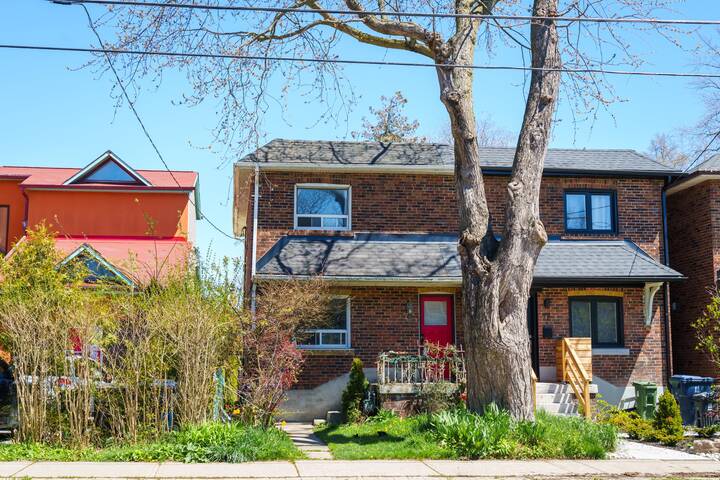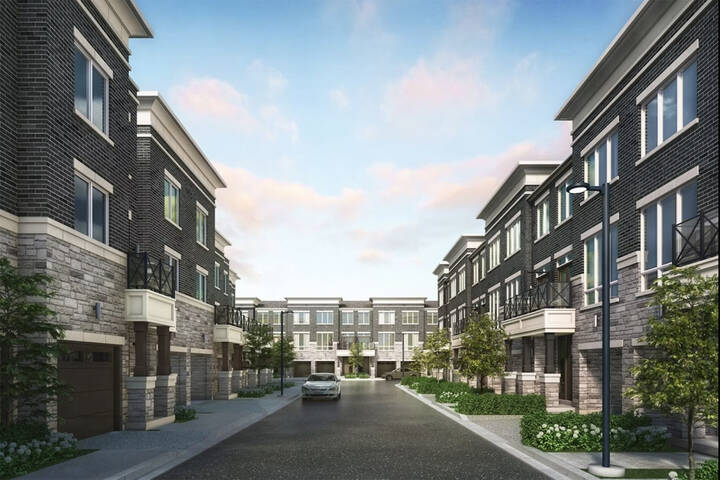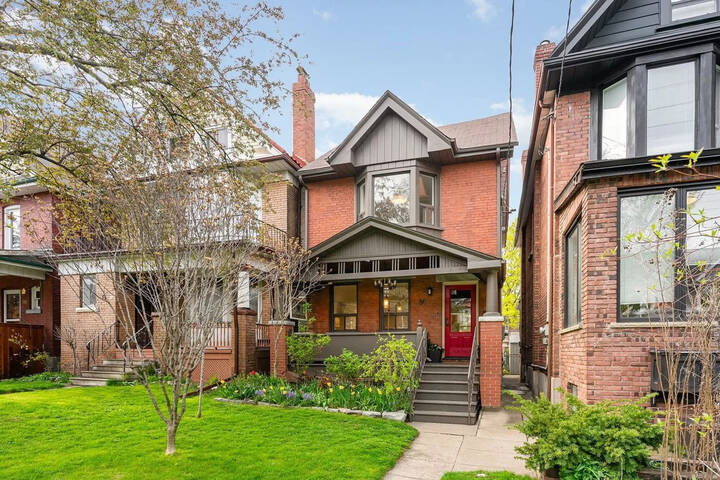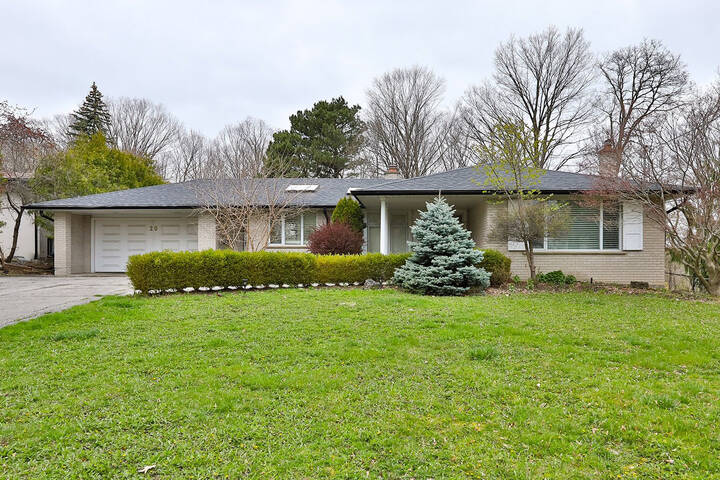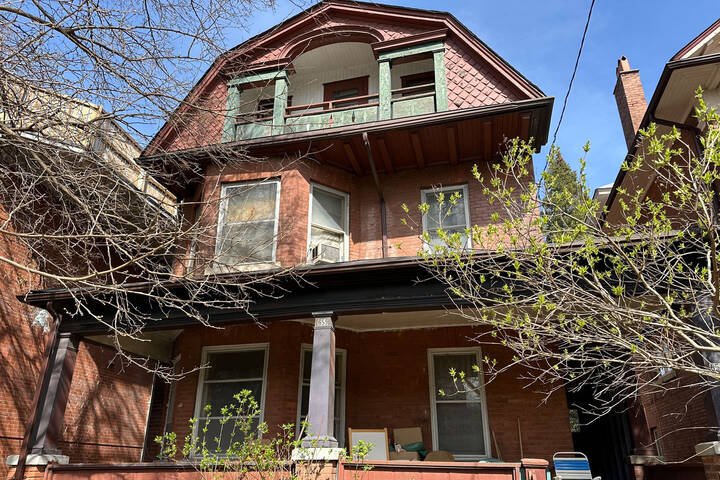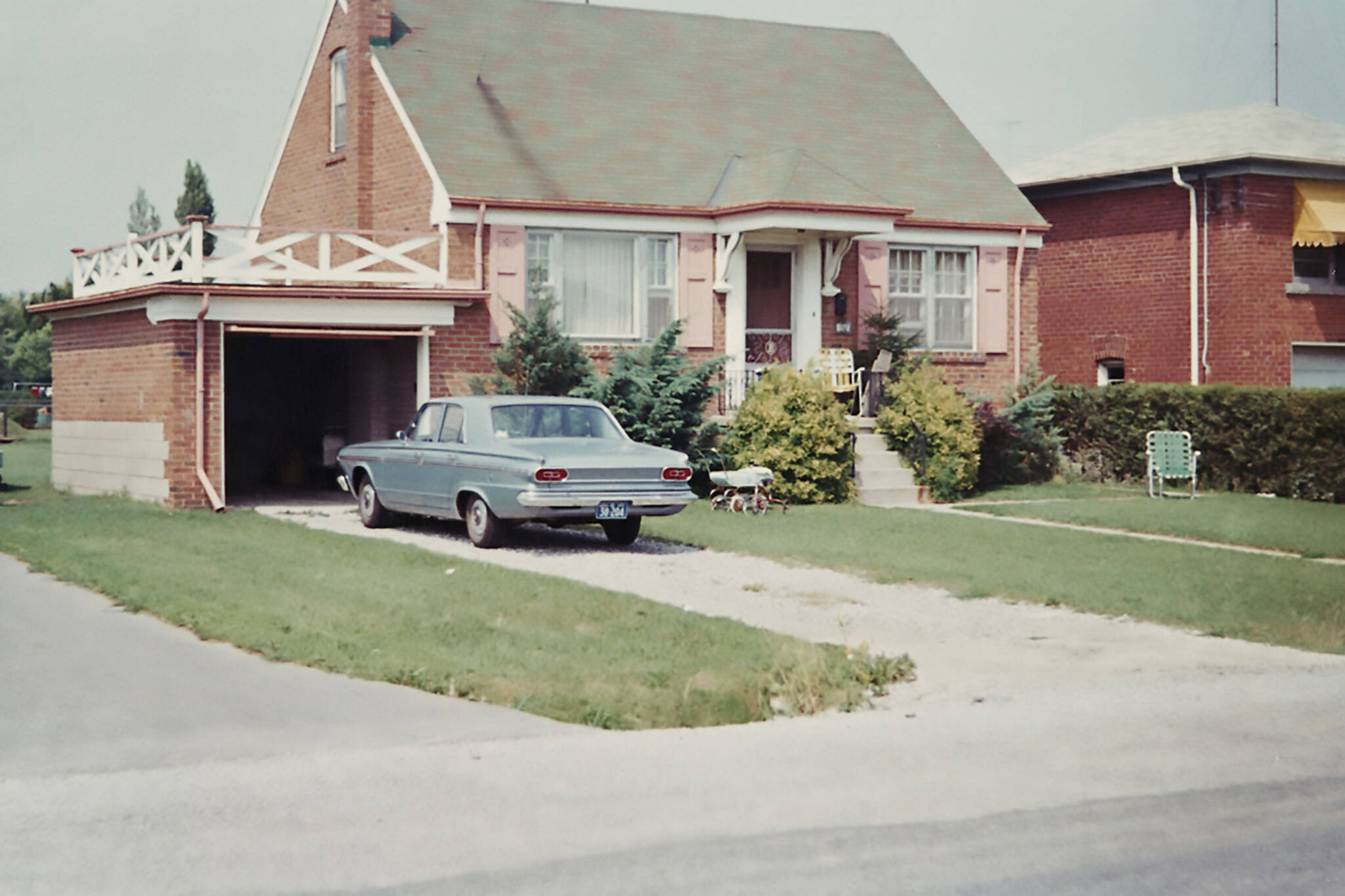
The fascinating history behind the 'strawberry box' houses that shaped Toronto
It may seem unimaginable amid Toronto's cutthroat 21st-century real estate market, but there was a time in the not-too-distant past when single-family suburban homes were built en masse with government funding and rented out for cheap to Canadians.
If you've ever spent time in the inner suburbs of North York, Scarborough, and Etobicoke, there's a good chance you've probably encountered the mass-constructed postwar bungalows known today as 'strawberry box houses.'
The mass of soldiers returning from abroad after World War II shaped the country's built form and profound societal differences in the following decades, largely thanks to a federal government housing program that leaves a lasting legacy.
More than one million would return from abroad in 1945, a decent share of Canada's then population of 12 million, and the government was well-aware that housing would be an urgent need for returning troops.
A mass-housing drive was planned across Canada by the Wartime Housing Corporation (WHC) — a crown corporation established in early 1941 that served as a predecessor to the Canadian Mortgage and Housing Corporation (CMHC) that exists today — in hopes of meeting the unprecedented demand for homes.
One year after the WHC's establishment, the Veterans' Land Act of 1942 was passed — forged from lessons learned in the chaos that followed the end of WWI — guaranteed housing for returning veterans and their families.
The government wouldn't know it at the time (the war was not necessarily going great for the Allies in '41-42), but this timing would give the WHC and builders a few years head-start ahead of returning troops.
Though the so-called Victory Housing program only produced about 30,000 homes during those war years, strawberry box homes were constructed in staggering quantities in the years following the actual victory against Axis powers that these houses were preemptively named for.
The Victory Housing construction drive would outlast the WHC (which merged with the 1945-established CMHC in 1947 to administer the program), and continued well past the war years, with strawberry box homes built in Canada as late as 1960.
From its peak in 1946 to the end of the strawberry box era in 1960, over one million of these modest little homes were built nationwide, establishing a now-ubiquitous look in suburban areas nationwide, including those surrounding pre-amalgamation Toronto.
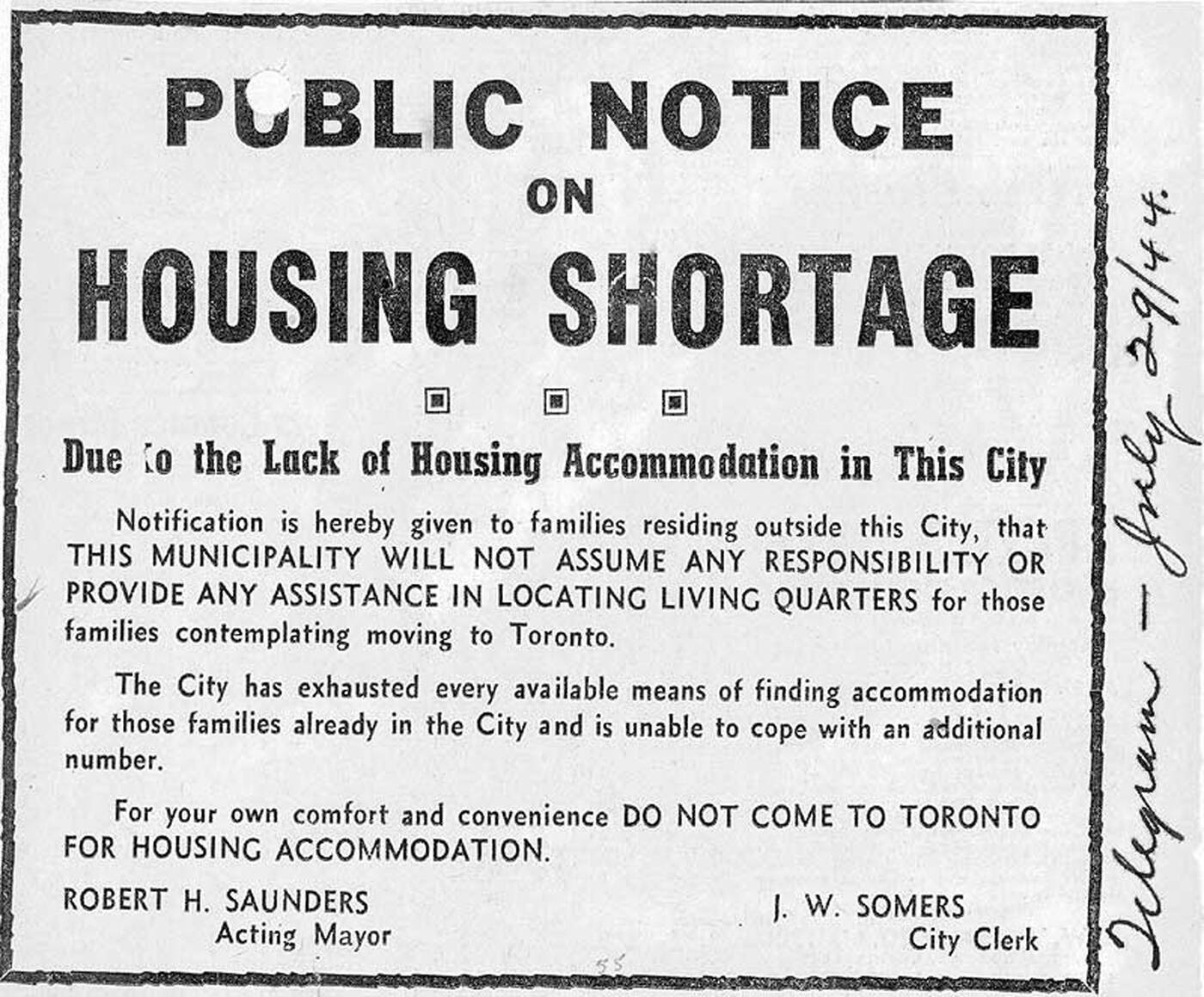
A July 29, 1944 public notice on the pressing housing shortage that was then facing Toronto. Image via City of Toronto Archives.
The ensuing boom happened seemingly overnight thanks to what were then innovative prefabricated construction techniques and simplistic designs that allowed some homes to be erected as quickly as 36 hours from start to finish.
Victory homes built during wartime were initially offered as rentals at unbelievably low rates, between $22 and $30 per month. A few generations of inflation later, these 1945 prices would equal a still-cheap range of $375.91 to $512.61 monthly in 2023. Tenants were later offered the option to purchase the homes from the CMHC for sums as low as $6,000
These small bungalows on simple square or rectangular foundations, with clapboard siding and pitched rooflines, would become widely known as strawberry-box houses in the following decades due to their resemblance to berry-toting containers.
The homes' architecture, which reads as a toned-down Cape Cod Colonial Revival Style, was not exactly well-received by architects of the era but has since gained acceptance for its charming and quaint simplicity.
Living the suburban dream in 1965. Thousands of Strawberry Box- or Victory Houses were built between the Second World War and the 1960s. This one stood on Clanton Park Road in North York. #TorontoArchitecture #TOHistory #TorontoArchives pic.twitter.com/55z3QCeAMt
— Toronto Archives (@TorontoArchives) July 24, 2023
The Victory Housing program was created under the assumption that the small homes provided for cheap on plots with generous yards would foster a micro-farming boom to aid the war effort, dovetailing with the Victory Garden movement of homeowners-turned-farmers.
However, Victory Housing and Victory Gardens, in general, are argued to have had a negligible impact on food supply during the war years.
Instead, the proliferation of single-family housing in areas with little-to-no transit service would prove a significant factor in the rise of the Canadian suburb — which perfectly aligns with the timeline of their construction.
Returning troops and the end of domestic wartime employment brought about profound shifts in the Canadian population as many abandoned rural life for cities (and suburbs).
Combined with the baby boom era's population spike, these factors led to shortages in both the housing and labour supply that persisted well beyond the wartime phase of home construction.
Other factors in suburban growth may deservedly receive more attention, like the rise of cars and, perhaps more infamously, the racist redlining real estate practices and resulting white flight that promoted investment in these suburbs and fuelled the decline of cities across North America.
The spread of urban sprawl extending outward from Toronto has slowed in recent years after decades of unchecked growth. However, these figurative seed crystals of suburbia still exist all across the city today.
You can still find them in most of Toronto's now-incorporated inner suburbs, often in great numbers, such as throughout North York. They are also quite common in areas of Scarborough south of Highway 401 and parts of Etobicoke north of the 401.
Neighbourhoods where the strawberry box style persists as the dominant form of housing a full three-quarters of a century later include Queensway Park in Etobicoke and Topham Park in East York's O'Connor and St. Clair area.
They may be plentiful, but these homes are threatened in some parts of the city. One case is in the Willowdale area of North York, where large tracts of Victory Homes once stood. A community of 140 such homes constructed around 1950 in the area of Finch Avenue West and Talbot Road has dwindled to under three-dozen survivors in the almost 75 years since.
More will likely fall in the years to come as communities grow up and densify, but their style leaves a lasting legacy on Toronto that cannot simply be upzoned and demolished.
City of Toronto Archives.
Latest Videos
Latest Videos
Join the conversation Load comments

